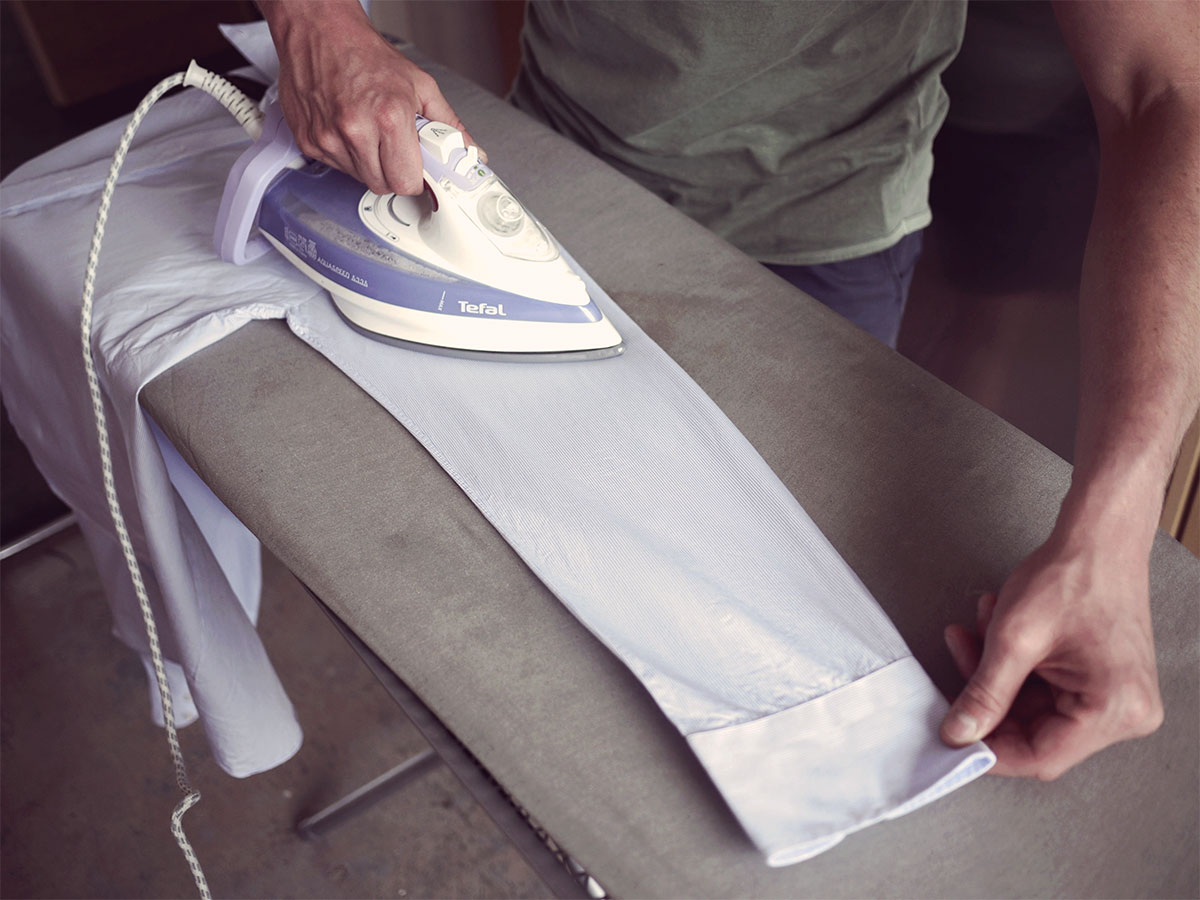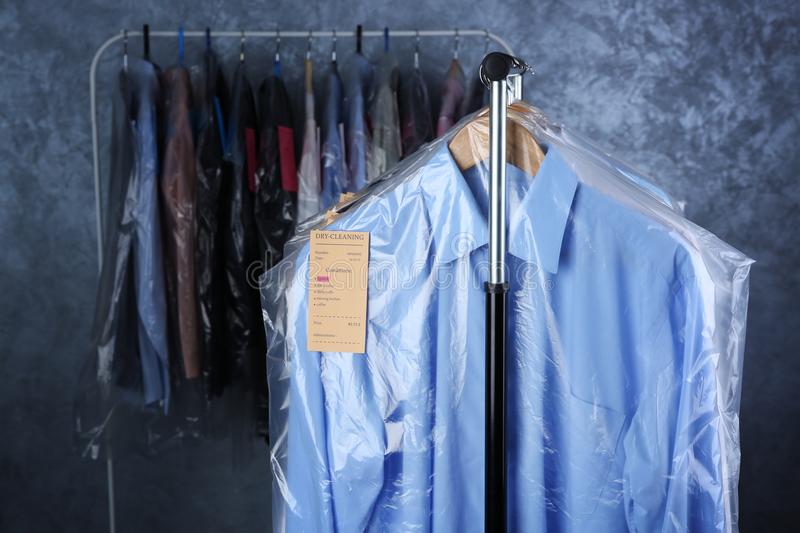Learning how to iron clothes is a useful skill that will benefit you in many areas of your life. Ironing will not only leave you with wrinkle-free clothes but can save you some money on dry cleaning. Learning how to iron clothes is part of learning how to do laundry since the two go hand in hand.
However, ironing clothes is not as simple as it sounds, and there are several things you need to consider when doing so. Different fabrics will require different pressing techniques. You also need to sort your materials ahead of time.
In this article we’ll talk about the most important ones, so you learn how to iron clothes properly. Follow these steps for success in ironing your shirts, dresses, pants, dresses, and skirts:
Clean Your Garments Before Ironing
To have a truly clean garment that you can iron, you should wash it first. Check the label for washing instructions, and be sure to follow them closely. If a garment is not labelled dry-clean-only, you will probably want to wash it before ironing it.
This is especially true if your clothes have been packed away in a box for a while. It is very important not to skip this step because any dirt or oils from your fingers will transfer to the hot iron, resulting in a shiny spot on your garment.
Clean Your Iron
Rust can get in whatever you’re ironing, so make sure your iron is also clean before you start. Just like how to clean a washer, you can use white vinegar or rub a lemon half on the bottom of the iron. After that, wash it as usual and never use bleach on rust stains. Make sure you clean your iron regularly to prevent steam vents from clogging and making metal plates become sticky.

Image credit: https://hips.hearstapps.com/
Get Out Your Ironing Board and Make Sure It’s Stable
Having a flimsy ironing board is going to cause problems pretty quickly. Not only can you damage your garments with a wobbly surface, but it could also burn yourself or a loved one if the table collapses while you’re in the middle of ironing. You may want to choose a sturdy model that’s heat resistant.
If you don’t have an ironing board, you can still iron your clothes well using a flat sturdy surface like a table and counter so long as you’ve prepared them properly.
Unbutton and Unzip Your Clothes
Buttoned or zipped clothes won’t sit on the ironing board smoothly, so you’ll want to unfasten all the buttons and unzip any zippers before you start pressing the cloth. Ensure you use the pointy part of the iron to get between the buttons. Never iron over the buttons and if you have time, wrap those delicate buttons in aluminum foil before ironing your fabric.
Fill Your Iron with Water for Steam
Fill up your iron reservoir with enough water to produce steam while you iron. You’ll want to use distilled or spring water if you’re particularly sensitive to the minerals in hard tap water, but this isn’t strictly necessary for most people.

Image credit: https://femina.wwmindia.com/
Steam is better than dry heat when it comes to ironing your wrinkled outfit. This is because the hot steam penetrates more deeply into the fabric fibers and relaxes them. Always start with the coolest temperature recommended on your iron’s settings and increase the temperature if necessary.
Sort Your Laundry by Material
Different materials will require different ironing techniques. Start by sorting your clothes according to the material. Polyester and other synthetic fabrics require the hottest iron temperature, as these materials tend to melt under lower temperatures. Spritz these materials with a spray bottle filled with water to get them damp.
Cotton and linen fabric should also be ironed damp. Pull them out of the dryer before they get completely dry. Use a spray bottle with clean water to spritz each section as you go along. You should use medium heat for polyester and high heat for cotton and both fabrics should be slightly damp.
Wool and silk should be ironed at a low setting. These materials are very sensitive to high temperatures, but they don’t need to be pressed with a cool iron either – you can use a slightly warm temperature for wool and silk garments, especially if their tags indicate it.
Check if Your Iron is Ready
Irons will indicate if they’re ready in many ways. A light may turn and off, or a knob will indicate it’s ready to be set. If you have an iron without any indicators, first turn it on and wait for at least three minutes to feel the effects of the heating process.
An iron must become hot enough to produce steam before pressing can take place. The lowest heat settings won’t produce steam, and pressing over a naked flame can be dangerous.
Use a Damp Cloth When Ironing Lace and Wool
Do not expose delicate items such as lace and wool to direct ironing as it can melt and damage the fibers. Place a damp cloth or an old white towel over the item and iron on top of it to avoid direct contact with the iron. Make sure your fabric is damp and not sopping wet.
Turn Delicate Fabrics Inside Out Before Ironing
Turn the garment inside and press it from the wrong side to avoid damaging or distorting delicate fabrics. The outside finish of a piece of clothing and any print on it will be pressed down flat by an iron, which is why it’s advisable to always iron clothes inside out.
How to Iron Shirts
If you want to iron a shirt, start at the center of the underside of your shirt collar and work your way to the edge. Drape one side of your shirt’s shoulder over the edge of your ironing board. When iron sleeves, move from the cuff to the shoulder, ironing both sides of the sleeve.

Image credit: https://www.dmarge.com/
If you’re ironing French cuffs, use a sleeve board to insert it in the cuff and iron directly on top of the cuff. Otherwise, you could end up with burned fingers or burns on your clothes. Be sure to press down on the folded-over part of the cuff with your iron’s flat surface.
Iron Your Pants from the Waist to the Leg
When it comes to ironing pants with pockets, turn them inside out and start ironing the pockets. But if you have pockets, proceed to the regular ironing process. Go lightly over the pockets so as not to create pocket lines. After that, lay your pants on the ironing board flat with one leg laying on top of the other. Fold back the top leg and iron the inside of the bottom leg.
For a center crease in your pants, start by ironing in the center back. Then roll up your pants so you can iron the leg part. Start ironing from the waist to the hem of your pants in small sections. The same goes when it comes to folding over cuffs and pleats. Here, you can use the steam function if you don’t have a spray bottle.
Iron Skirts and Dresses from the Collar Down
Skirts may seem simple to iron, but complications of pleats, ruffles, and gathers often arise. To iron skirts, make sure to remove the skirt from the hanger. Slide your skirt over the ironing board and begin wrinkle removal using a pressing and not pushing motion.
Start ironing from the collar down toward the bottom of the skirt in sections by moving all wrinkles away from the waistline toward the hemline. Skirts and dresses are made of very delicate fabrics, so they may scorch or be marred by steam. Check your label before setting the iron and test in inconspicuous places to ensure good results.
Keep Clothes Damp
Damp clothes are easier to iron than dry clothes. So, make sure you give your garments some nice coat using a spray bottle. This will make your clothes become wrinkle-free within a short time.
Hang Your Garments on Hangers After Ironing
You should iron fabric lengthwise to prevent stretching, plus, do not hang your garments on wires after ironing; instead, use non-wire hangers in order to keep your clothes in good shape. For button-down shirts, button the top button to hold the collar up.

Image credit: https://thumbs.dreamstime.com/
Let Your Iron Cool for At Least 10 Minutes Before Putting it Away
An iron gets extremely hot and can set fire to clothing or dry-cleaning materials like cardboard or paper. If you don’t know the brand of your iron, look for the manufacturer’s name under the soleplate of your iron. Always stand the iron upright when you stop ironing for a moment.
Never iron clothes that are stained, damp, or still slightly wet because the heat will set the stain and make it impossible to remove later on. Always take care not to leave the iron unattended when in use since this could cause a fire hazard. Check the care label before using the steam because some fabrics require a dry iron only.
FAQs on How to Iron Clothes
What can you put on iron to make it slide easier?
When you’re ironing clothes, spray starch will make the fibers stick together and let the fabric glide more easily. However, be careful not to overspray since this can put too much starch on your clothes and stiffen them beyond what’s comfortable.
What is the difference between ironing and pressing?
Although they’re used interchangeably, ironing is the back and forth motion, while pressing is more swiping. Ironing also generally refers to items that require more attention than pressing, which is usually only used on fabrics that don’t need much smoothing out.
Can you iron all the clothing?
Yes, you can iron clothing, unless specified in the laundry tag. You also need to ensure you’re using the appropriate settings for your fabric.
What do you think is the best method for ironing clothes?
The best way to press your clothes is by pulling them straight down onto the board rather than dragging them across it. This allows you to get smooth results without any creases or lines in your clothing caused by the ironing board being slanted.
Final Thought on How to Iron Clothes
As you can see, ironing clothes is simple and only requires the proper use of the best method. You can do this by choosing a flat surface on which to place your clothing and making sure you select an appropriate level of heat for your fabric.
Keeping your fabrics ironed and burn-free is simple when considering a few things in mind as stated in this article.
The post How to Iron Clothes appeared first on Kitchen Infinity.
Did you miss our previous article…
https://chefbuano.com/?p=567